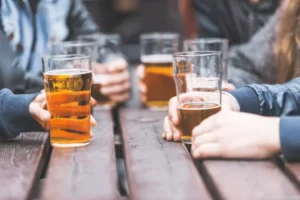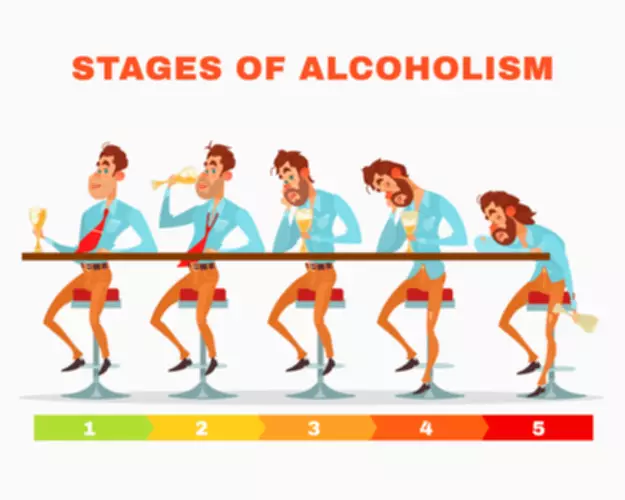
Below, we provide a brief update on the research on gender differences in the treatment of SUDs published over the past 10 years. Our discussion will first focus on studies comparing men and women, followed by studies of gender-responsive treatments and treatment for pregnant women. The results of this study indicate that gambling is becoming a major mental health problem for young adults, especially among young adult men. A number of evidence-based practices have been developed for gambling problems, but few counselors and other mental health care providers have been trained in these interventions (Kaminer 2007; Westphal and Abbott 2006).
A Study of Drug Addiction Between the Genders
Men are more likely to die from a prescription overdose, but women have experienced a more significant increase in overdoses related to opioids. Prenatal opioid use is also growing, and the number of babies born with neonatal abstinence syndrome (NAS) increased more than five-fold from 2004 to 2014. Women may be more susceptible to stimulant addiction due to their different hormone makeup. In studies that discuss cocaine abuse, women report feeling more high and having a more increased heart rate than men do. Treatment-seeking and entry is limited among pregnant women with SUDs, with only 8.7% receiving specialized treatment (Terplan, McNamara, & Chisolm, 2012).
Statistics on the Impact of Substance Abuse on Crime Rates

However, amphetamine addiction treatment despite increasing awareness, women continue to face tough obstacles in access to evidence-based treatment, and even after treatment, face higher rates of relapse due to a number of external, and possibly biochemical factors. As a result, they are also more likely to struggle with addiction for a longer duration than their male counterparts. One of the significant challenges faced by women in seeking addiction treatment is the balancing act between their responsibilities at home and their own well-being.
- However, medical professionals confirm addiction treatment is as effective in women as in men.
- Deaths related to injuries and overdoses increased significantly for females ages 16 to 20 but did not change for males.
- Rates for sexual abuse in childhood and adulthood are reportedly higher in women than for men.
Gambling Engagement
Information from another study noted that in those older than 65 years old, prescription drug abuse was almost three times as high as that for men in the same age bracket. Between the ages of 18 and 44, admissions for treatment of substance use disorders were predominantly women. As modern science has improved our understanding of how addictions develop, how they impact addicts, and how successful treatment programs are, interesting gender patterns have also emerged. It turns out that men still become addicted to drugs and alcohol at higher rates, for instance, but women escalate their substance abuse much faster. Alcohol consumption by an individual often leads to harms to others, also known as secondhand harms.12,71,72 Traffic crash injuries and fatalities are well-known secondhand harms caused by another person’s alcohol use, but there are more.

Contact Vertava Health
- Research from theNational Institute on Drug Abuse(NIDA) suggests that more males use drugs at an earlier age not because they are more susceptible to substance abuse, but because they have more opportunities.
- However, the quarter of anorexia sufferers who are men are even more stigmatized because people assume that men don’t get eating disorders.
- Men also may be minimizing the risk of gambling while maximizing the perceived benefits.
Substantial heterogeneity within sexes in metabolic processes, as well as the contribution of multiple metabolic pathways to the clearance of substances may obscure sex differences in drug metabolism (DeVane, 2009). Nonetheless, findings to date suggest that the metabolism of substances (and, accordingly their effects) cannot be assumed to be consistent for males difference between drugs and alcohol and females. Some research suggests that women are more sensitive to pain and may experience chronic pain more often than men. Women are also more likely to misuse prescription opioids (like oxycodone) and illicit opioids (like heroin) to self-medicate for pain or anxiety.
- Employers and educational institutions have higher odds of realizing men have a substance addiction and to refer them for treatment, too.
- However, 8.8% of adolescents (i.e., ages 12–17) of both genders reported past-month illicit drug use (CBHSQ, 2016).
- A number of biological differences exist between males and females in the acute and long-term effects of alcohol and other drugs.
- This research is particularly critical in light of the narrowing gender gap in the prevalence of SUDs, characterized by an increasing representation of women (Keyes, Grant, & Hasin, 2008; Seedat et al., 2009a).
- For example, one study provided information that as many as 57% of drug addiction women met the criteria to be diagnosed with post-traumatic stress disorder (PTSD and substance abuse).


